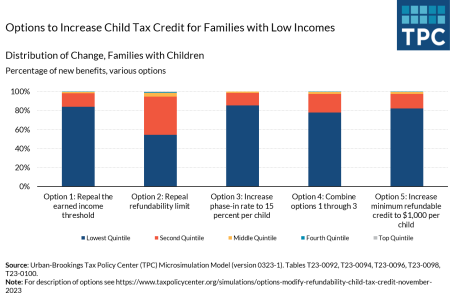Tax Notes contributing editor Ryan Finley provides an overview of amount B from pillar 1 of the OECD’s two-pillar corporate tax reform plan and discusses the fundamental dispute over it.
This transcript has been edited for length and clarity.
David D. Stewart: Welcome to the podcast. I’m David Stewart, editor in chief of Tax Notes Today International. This week: Let it B.
We’ve often talked about the many iterations of the OECD inclusive framework’s work on the two-pillar plan for updating the taxation of multinationals. But this week, we’re going to drill down into one aspect of the plan — specifically amount B of pillar 1.
Here to explain what that is, why it matters, and where things stand is Tax Notes contributing editor Ryan Finley. Ryan, welcome back to the podcast.
Ryan Finley: Thanks for having me.
David D. Stewart: First, let’s set the scene with an overview of the two-pillar plan.
Ryan Finley: Sure. The two-pillar plan consists of pillar 1, which basically, as it now stands, consists of two amounts, amount A and amount B, as you mentioned; and pillar 2, which is the minimum global tax regime.
Now, amount A tends to dominate the conversation when it comes to pillar 1, and that has to do with basically reallocating taxing rights to market jurisdictions, whereas amount B is a streamlined way of applying the existing rules for allocating taxing rights.
David D. Stewart: Now, what exactly are we trying to solve by putting amount B in there if there are already rules in place that deal with the issues?
Ryan Finley: Right. The existing rule you’re referring to is the arm’s-length principle, which amount B isn’t really so much trying to displace as it is trying to simplify.
The idea is that there’s basically this category of disputes — whether they’re between taxpayers and tax authorities or between competent authorities in a mutual agreement procedure case — that are more trouble than they’re worth.
The idea is that for a class of distributors — specifically wholesale distributors, they’re referred to in the OECD parlance as baseline distributors — that everyone knows what return they should get under the method that usually applies to them, the transactional net margin method, or TNMM. Basically, the idea is that the amount of compliance work that you have do to apply the TNMM is disproportionate to the benefit.
If we all know the answer, there’s no need to do a comparable search for comparable companies just to get to the same result you knew you were going to get to begin with. The idea of amount B is to basically make those disputes go away, make all that compliance work go away, and just stipulate the answer to the question that we knew was there all along.
David D. Stewart: Well, if there is a widespread agreement on how these should be taxed before amount B is in place, why does it raise so many disputes?
Ryan Finley: The idea is that everyone knows what the answer is going to be. In practice, it’s a little more complicated. You could apply the TNMM in a way where you have a small set of comparables, where kicking out or including one potential comparable could have a material effect on the arm’s-length range and the return that the distributor should earn.
While it’s simple in theory, it can get more complicated, especially when you have obviously various revenue considerations. I’m sure that affects the position that competent authorities take, and obviously taxpayers have their own interest in the outcome as well. It’s more about the specifics of these disputes rather than the overall idea of what they’re trying to do.
David D. Stewart: All right, so let’s turn to the current state of play here and the recent consultation the OECD inclusive framework released about amount B. What is in there?
Ryan Finley: Most of what’s in this consultation document can probably go under one of two categories. The first is scope: Basically all the conditions that you have to satisfy as a distributor to get into the amount B framework. The second category would be the pricing method that applies once you established that you’re in scope.
David D. Stewart: What approaches are we seeing in this document?
Ryan Finley: As I think we’re going to discuss later, there’s still some disagreement about what particularly the scoping criteria should be, but most of the consultation document reflects positions that seem to be shared from all inclusive framework countries.
For the scoping criteria, you first have to establish that you have what they call a qualifying transaction. Basically, you have to have a wholesale distributor as the tested party that’s potentially going to get its return based on amount B.
After you establish that you have a qualifying transaction, then there are a series of, as they call them, scoping criteria in the consultation document. There are four that everyone agrees on, and there’s one that they disagree on. But the four, they’re basically designed to kick out companies that are doing more than wholesale distribution in terms of sales and marketing or that kind of thing, or performing unrelated activities.
But once you clear all these screens, you establish what the operating margin should be for the distributor based on this table, or what the OECD calls a pricing matrix. You essentially have columns that are based on industry groupings that are supposedly correlated with profitability. You have rows that are based on the ratio of either operating expenses or operating assets to sales, and that’s supposed to be a proxy for how much the distributor is doing and what they deserve a return for.
Based on where you fall in that table, you have a range of plus or minus half a percentage point for what the operating margin ought to be.
David D. Stewart: This is sort of, I dare say, a formulary apportionment system being placed into the transfer pricing realm?
Ryan Finley: That probably depends on how you define formulary apportionment. I mean, there is a formula, and the denominator is sales, but I don’t think it’s as normally — I mean, the whole idea is for this to be inserted into the OECD transfer pricing guidelines. It’s certainly not meant to be formulary apportionment, even if there are formulary aspects of it.
David D. Stewart: Where do things stand on the negotiations on this? What are we looking for to be resolved through this consultation?
Ryan Finley: Right. As I said, there are four screens that everyone agrees on, and it’ll probably help to go into a little bit of detail on them. The first screen is meant to kick out distributors that perform or that make unique and valuable contributions. That’s a term of art in the OECD transfer pricing guidelines; basically, it covers entities that essentially do things that contribute to profit significantly and that are unique. You can’t really benchmark them using comparables under a method like the TNMM.
That’s your first screen. Your second screen is a filter based on operating expenses divided by sales. And like I said, in terms of the pricing matrix, that’s supposed to capture the extent to which the distributor’s doing things other than just moving goods along. The cost of the goods would be cost of goods sold. Whatever is operating expenses presumably reflects additional activities.
The final two screens that it seems like there’s consensus on knock out distributors either of commodities or services and distributors that perform unrelated activities that can’t be disentangled and separately priced from the distribution activities themselves. The term is aggregation — again, in transfer pricing parlance. The idea is that if you can’t disentangle these unrelated activities, that you can’t reliably apply this amount B pricing method.
The big disagreement is about this one other scoping criterion, and the consultation document explains that this is the point of divergence between what it refers to as alternative A and alternative B.
Under alternative A, you don’t need any additional screens beyond the ones that I described. The supporters of alternative B think that you need an additional qualitative filter to kick out distributors that, however defined, perform more than baseline distribution activities.
The countries that support this view think that the first two filters — the one-sided method filter and the operating expense intensity filter — that they’re not going to kick out all of the distributors that shouldn’t be under the amount B regime, and that they need this qualitative backstop to eliminate companies that maybe will survive those first two screens but nonetheless should not be eligible for amount B. They make a couple arguments for this that at least appear in the consultation document.
One is that they think that taxpayers could manipulate their accounting cost classifications so that costs are either attributed to operating expenses or cost of goods sold, depending on what the desired outcome would be. The other objection is that the operating expense intensity really doesn’t have a well-established statistical relationship with returns.
Alternative A supporters, which include the United States, say that if you have this mushy qualitative filter on top of everything else, it’s not only redundant, but it undermines the whole purpose of the project, which was to simplify things and provide a streamlined method.
If you have a highly subjective qualitative test that basically asks whether the distributor performs non-baseline activities, whatever that exactly means, then you might end up having the same disputes that you were trying to get rid of, just in a new form.
David D. Stewart: Now, do you see any way for these two parties to come together and resolve between alternative A and alternative B?
Ryan Finley: Yeah, it’s a good question. There was an earlier consultation in 2022, and if you compare the two consultation documents, there’s clearly been a lot of progress on amount B, where it was very, very vague in the last consultation document. You have a much more refined proposal; there’s clearly a lot of common ground.
At the same time, this dispute over whether you need an additional qualitative filter, it’s a pretty fundamental one, and signs are that countries are digging in their heels on it. I think there’s still a fair amount of optimism that some kind of agreement can ultimately be reached, but it’s going to require resolution of a pretty divisive question to get there.
David D. Stewart: Now, this is in the context of a much bigger project. You have the rest of pillar 1, and you have pillar 2 going at the same time. Is it necessary to resolve this in order to get the entire package completed?
Ryan Finley: It’s not necessary in any legal or technical sense. What would happen with amount B is you’d have guidance that would be inserted into the OECD transfer pricing guidelines, which essentially represent an extended commentary to article 9 of the OECD model tax convention. Really, as I was saying before, it’s just as a means of implementation. You don’t need treaty amendments.
You don’t need to introduce extensive changes to your domestic tax legislation, as you would require under pillar 2. Nothing about amount B requires resolution of these other issues. I don’t think the fate of amount A or pillar 2 will really be determined by what happens with amount B, either.
David D. Stewart: What is next here? What should we be looking for to happen in the coming months?
Ryan Finley: The consultation period runs through September 1. The OECD will be gathering stakeholder comments until that time. I think the idea is for them to come out with some sort of guidance by the end of 2023, although that sounds a little bit ambitious in light of the OECD’s track record in terms of meeting deadlines, and also in terms of, as I was saying before, resolving a pretty knotty issue. I think the timeline will be probably dictated by the ability to reach a political agreement.
David D. Stewart: All right, Ryan, thank you so much for being here, and we’ll definitely have you back as we get more answers on how this is going to get resolved.
Ryan Finley: Thanks.
Read the full article here








